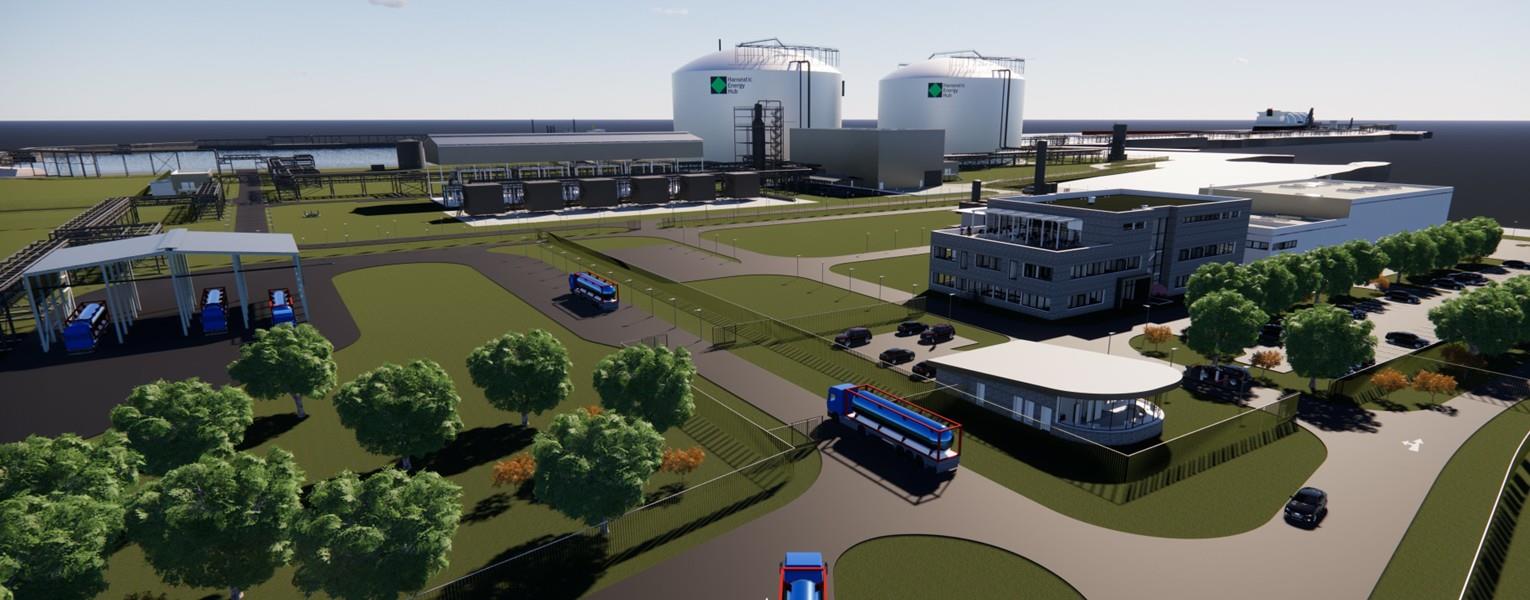Germany’s Hanseatic Energy Hub, the developer of the Stade onshore LNG import terminal near Hamburg, is planning to launch a market test for ammonia imports in the coming weeks.
Energy firm EnBW recently doubled its capacity booking to 6 bcm per year at the planned LNG import terminal with a capacity of 13.3 bcm per year.
Besides EnBW, Germany’s SEFE plans to import at least 4 bcm per year via the terminal, starting in 2027.
HEH said in a statement on Tuesday that it has now largely completed the commercial marketing of the project following long-term capacity bookings of 10 billion cbm per year of LNG.
The project is now pushing ahead with the parallel ramp-up of hydrogen, it said.
Heh says the land-based terminal in Stade would be both technically and commercially ammonia-ready.
At the same time, there is the option of building an additional, smaller ammonia tank as part of the future-flexible modular system even before the conversion of large tanks, HEH said.
As market requirements dictate demand, schedule, and design, HEH plans to launch a market test for ammonia as a hydrogen-based energy source in the coming weeks, the firm said.
“Stade is equipped to be flexible for the future and is technically ready to accompany the hydrogen ramp-up with ammonia from the very beginning,” Johann Killinger, managing director and co-partner, said in the statment.
“Via the market test, we can further concretize timing and design together with our customers,” he said.
Besides capacity bookings, HEH recently awarded the EPC deal for its terminal near Hamburg to a consortium led by Spain’s Tecnicas Reunidas.
According to HEH, the consortium consisting of Fluxys, Dow, Partners Group, and Buss Group plans to take FID to build the terminal in summer 2023.

